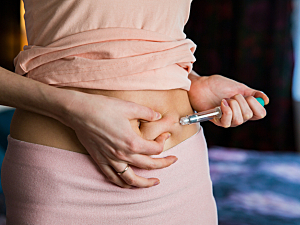Up to 35% of individuals undergoing ovarian stimulation for in vitro fertilization (IVF) have poor response. At Brigham and Women’s Hospital, extended dosing of a gonadotrophin-releasing hormone (GnRH) agonist is one of the protocols routinely used in these cases.
In the Journal of Assisted Reproduction and Genetics, Brigham researchers reported that very-low-dose and ultra-low-dose Lupron downregulation led to outcomes similar to other protocols for poor responders. The authors are Zachary W. Walker, MD, a clinical fellow in the Center for Infertility and Reproductive Surgery, Elizabeth S. Ginsburg, MD, fellowship director in the Reproductive Endocrinology and Infertility Program, and colleagues.
Methods
The team analyzed data on 3,601 cycles of IVF offered with or without intracytoplasmic sperm injection between January 2012 and December 2021.
All patients were potential poor responders according to the Patient-Oriented Strategies Encompassing IndividualizeD Oocyte Number (POSEIDON) classification. 742 cycles met criteria for POSEIDON group 3 (the patient was <35 years old with anti-Müllerian hormone [AMH] <1.2 ng/mL) and 2,859 met criteria for POSEIDON group 4 (the patient was ≥35 years old with AMH <1.2 ng/mL).
The ovarian stimulation protocols used were:
- GnRH antagonist (n=335 cycles in POSEIDON group 3; 896 in group 4)
- Microflare (Lupron 0.05 mg twice daily, n=194 and 909)
- Patch (estradiol priming/GnRH antagonist, n=132 and 745)
- Minimal stimulation (n=43 and 170)
- Very-low-dose Lupron (VLDL, 0.2 mg/day starting approximately 1 week after documented ovulation, decreased to 0.1 mg/day with onset of menstruation, n=11 and 61)
- Ultra-low-dose Lupron (ULDL, 0.1 mg and 0.05 mg/day, respectively, n=27 and 78)
Results
Within the POSEIDON 3 group, the small samples receiving VLDL and ULDL made it impossible to definitively compare those protocols with the others.
Within the POSEIDON 4 group:
- The ULDL and VLDL protocols resulted in significantly higher numbers of mature oocytes and fertilized oocytes compared with the microflare and minimal stimulation protocols
- There were no significant differences between the ULDL and VLDL protocols in cycle outcomes or pregnancy outcomes
- There were no differences in live birth rates between the ULDL and VLDL protocols and the other protocols
- The minimal stimulation protocol yielded the lowest number of mature oocytes and fertilized oocytes, but the live birth rate among all patients who started an IVF cycle was similar to that with the GnRH antagonist, patch, VLDL, and ULDL protocols and higher than with the microflare protocol
Recommendations for the Clinic
It is reasonable to adopt VLDL and ULDL protocols into standard practice when managing patients who are classified as poor responders based on POSEIDON criteria.
Because of the encouraging findings about live birth rate, minimal stimulation protocols should be strongly considered for poor responders to reduce medication costs.
